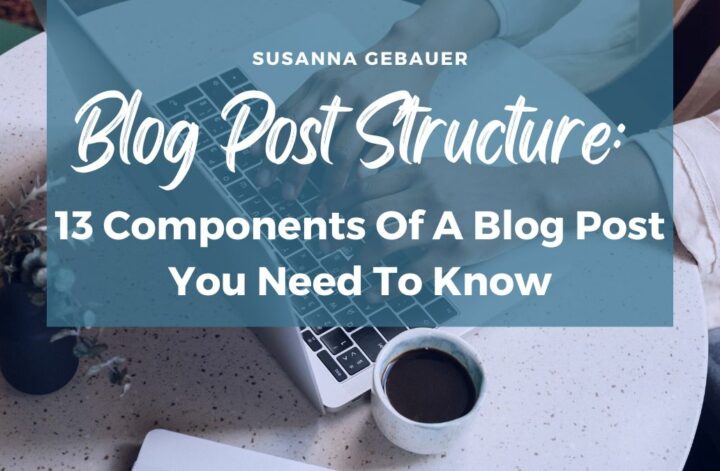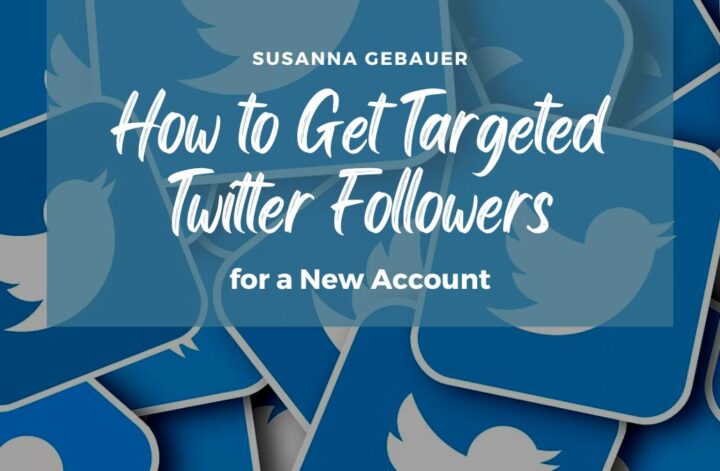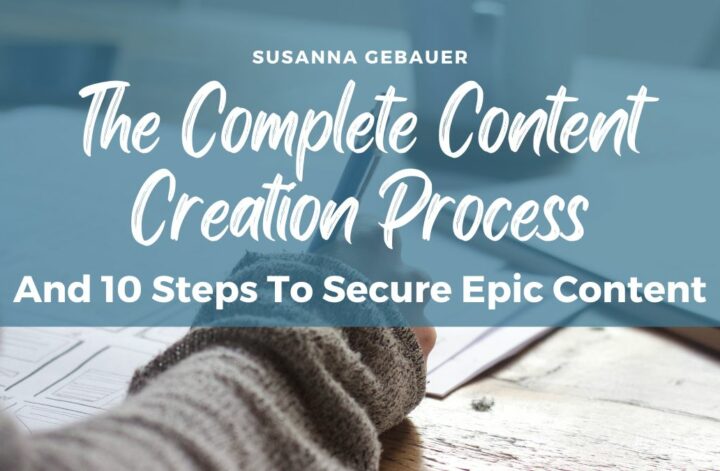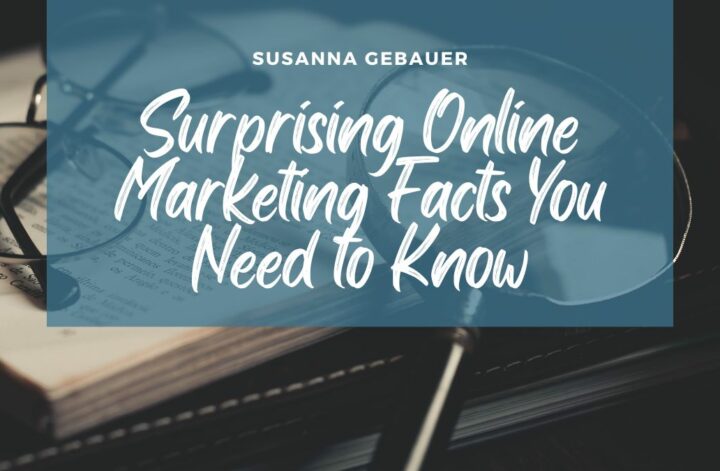There is a lot more to writing an exceptional blog post that will attract an audience than writing the body copy. You are probably aware that the blog post structure is crucial for success. But do know which components of a blog post you have been neglecting and why they are so important?
When I started blogging, I wrote content. I loved some of my articles. I learned to structure my blog posts, and that I needed to shorten some of my sentences, and reread it to make sure everything was clear. I learned to edit and proofread it twice rather than not at all – or use an editing and proofreading tool like Grammarly.
And then?
I neglected some very important components of blog posts. And for my first posts published on our website, it meant I missed a huge opportunity for more traffic and engagement.
What did I do wrong?
I used the first headline that came to my mind. I did not think about images at all or used a stock image that was loosely related to the content, and totally forgot about a caption or the meta description.
Then one day, I submitted a guest post to a famous marketing blog. It got accepted – celebration time! – but they changed the title and the header image.
And I started thinking.
OK. I get the image. Every blog has its own header image specification.
But the headline rang a bell, I realized they knew more than I did and I had to learn to create better headlines.
And I started to think more about blog post structure and the components of successful blog posts that have an important role even though they are not part of the actual post. I considered what these components are doing for a blog post and why they are so important.
How do people find your blog post?
Let’s consider what people first see when they find your post. It really depends a little on where people find your content.
We find content via Google search.
We see a headline, sometimes an image, the meta description, and sometimes some Google snippets. No body-copy. But this is what makes us click – or not.
We find content via social media.
Social networks like Facebook pull a preview from your content when you post a link. It contains a headline, an image, and the caption – not the body copy.
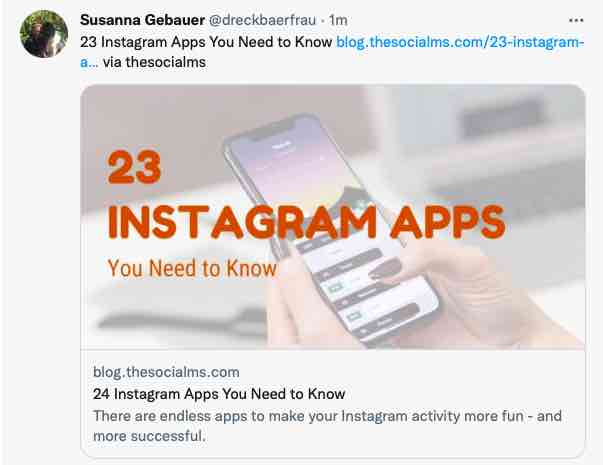
The same goes for Twitter if you are using Twitter cards, they show the headline, the header image, and a teaser text.
On Pinterest, it is up to you to provide a headline and some teaser text to accompany your image.
When you think about this, does it come as a surprise that many more people will read your headline than your body copy?
Why is the blog post structure important?
Can you see why neglecting headlines, images, and captions is going to hurt your success?
According to David Ogilvy
“On the average, five times as many people read the headline as read the body copy. When you have written your headline, you have spent eighty cents out of your dollar.”
That means of 100 people who see your headline only 20 will read the blog post – on average. And you want to make sure your headline inspires as many people as possible to click through to the full text!
I found another set of numbers that put image, headline, caption and body copy into relation:
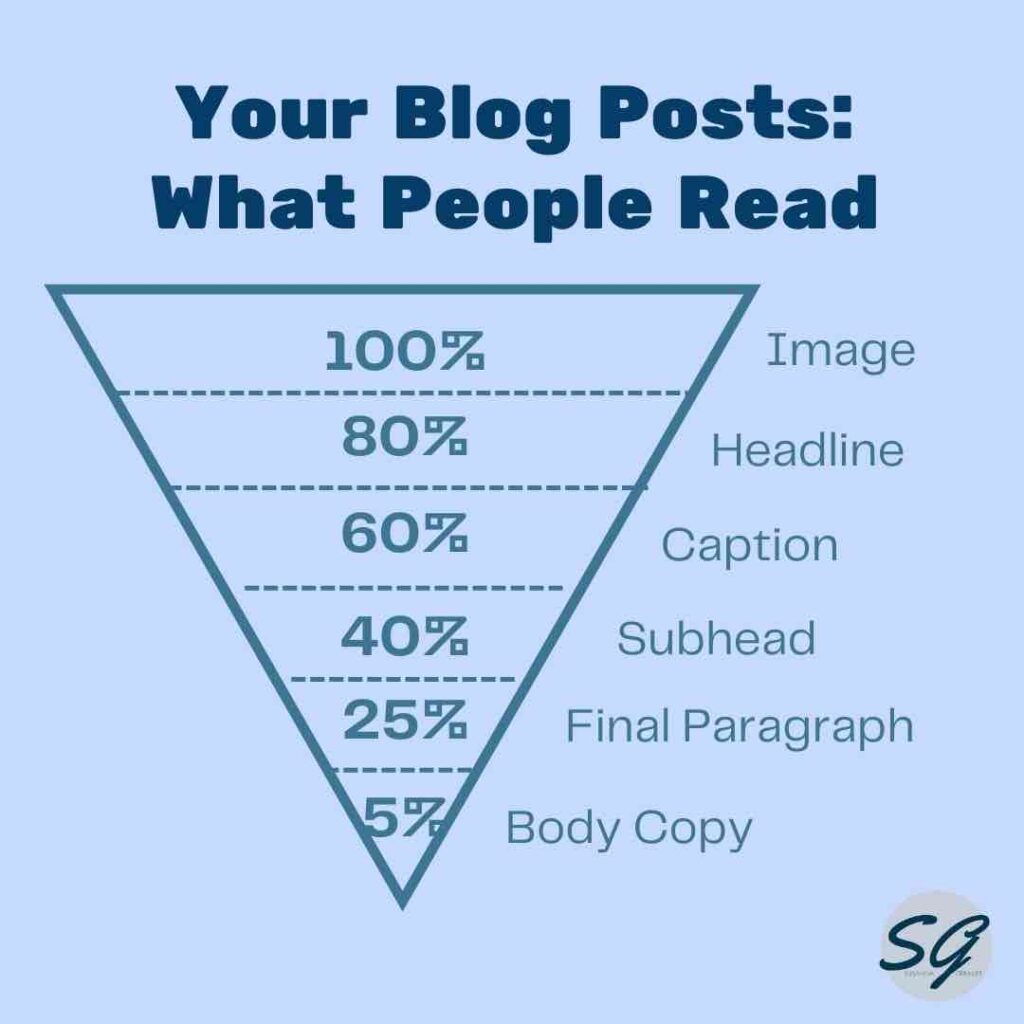
I could not verify the exact numbers in the graphic so don’t take them as bulletproof.
But they sure sound reasonable enough when I think about how a blog post is presented to a potential reader anywhere on the web.
And the above should be reason enough for every blogger to spend a little more thought not only on the body copy and the structure of a blog post but also on all the elements that a post needs to be successful.
Here are 13 components of a blog post to make it more shareable, and more likable and give it the best start to attract an audience from Google search and social media.
#1 The blog topic
The topic of your blog post is crucial for success. It should be clear to your audience what your post is about. Also, try to tackle topics that not everyone else has already covered, or try to find a unique angle for more common topics.
Just think about this: If there already are hundreds of blog posts about your topic, why should people read yours?
One way to stand out is to make your article better than what people usually see on the web. For instance, if you already have a topic in mind: Google it. Check the search results and how they cover the topic. Now think about what you can make better, and what you can provide that the existing articles don’t provide.
There is a name for this technique, Brian Dean calls it the skyscraper technique.
#2 Topic Audience Fit
There are great topics. And there are great topics for your audience and your potential customers.
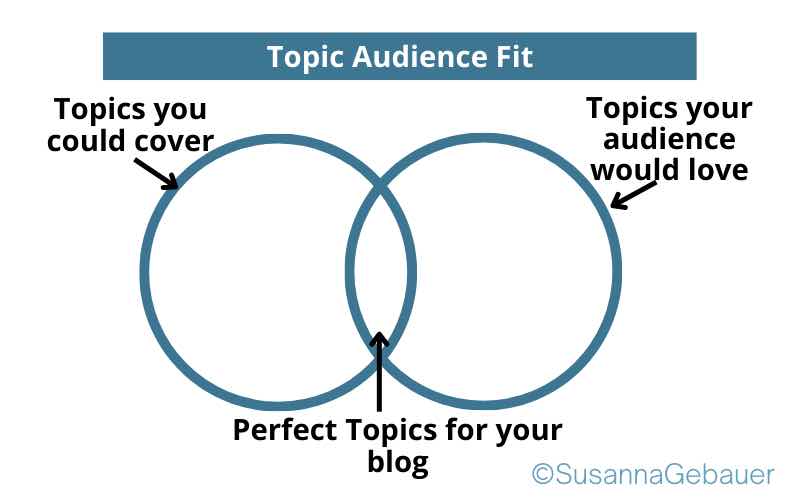
I already talked about the importance of your topic choice but there is more to this.
You don’t just need a topic that you can cover in-depth and for which you can provide a better post than the content that already exists.
You also need to consider your audience. You are writing this blog for your audience – and to attract customers to your products.
That means there are basically two things you need to keep in mind:
- Does this topic speak to your target group? Because you don’t just want to have an audience, you want people from your target group to come to your blog to read this.
- Is this topic going to bring readers closer to buying your products? This is hard to measure. But the simple formula is: the closer the topic is to the topics of your products the better it will serve to get more people to buy.
Do you need an example? I am writing a marketing blog. That allows me to cover a fairly broad variety of topics. But the main products that I sell are online courses about marketing. My best-sellers are a Twitter course and a content marketing course. I don’t sell an Instagram course. The scope of my blog does allow me to write about Instagram but the chance to get people closer to buying from me with Instagram content is not overly good.
#3 Your Personality
The one thing that no one else will have is your personality. It is what is making you, your content, and your blog unique. Don’t be afraid to add some personality to your blog content.
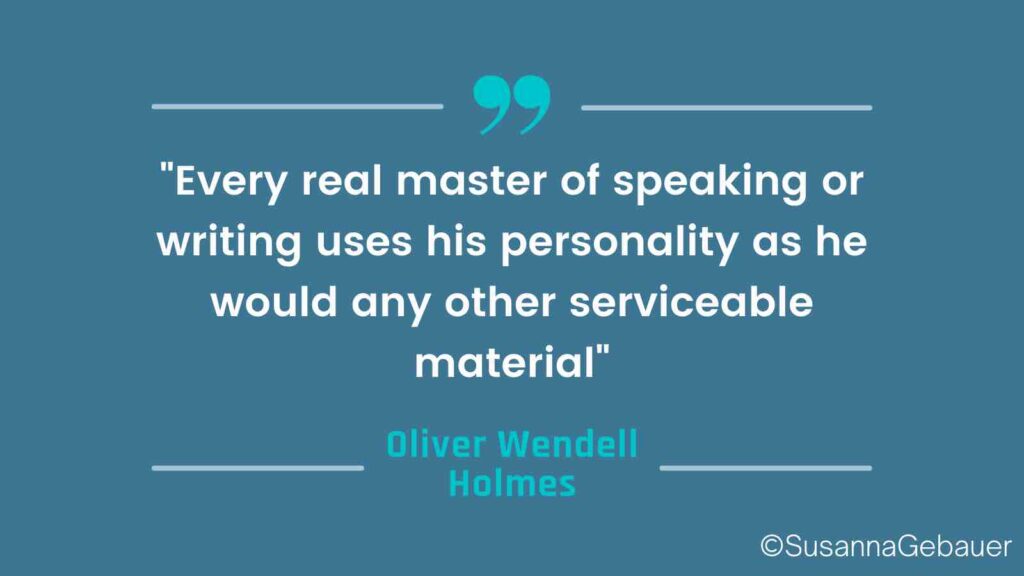
Your blog should build a connection with your audience and your personality is a big part of achieving this.
People like to connect to people.
Learn more about the importance of your blogging personality in this post.
#4 Substance
I have seen blog posts that even ranked fairly well but provided not much real information. I am sure they did their keyword research well – but the content still lacked any kind of interesting information.
If your post ends up being a string of superficial platitudes, why should anyone read it?
Remember? You want your post to stand out and aim at being better than the other content about this topic. You want your readers to like your content and feel they have gained something by reading it.
#5 A Reason why you are writing the post
Yes, a blog needs content. That is true. And if you are a new blogger, your blog needs a lot of content to compete.
But.
Every piece of content on your blog should have a reason why you created it. A better reason than “My blog needed more content.”
I have been stuck on the hamster wheel of content creation. When things did not grow as fast as we wanted or expected, I often heard: We need more content. And the more content did not get us anywhere but it brought me a serious case of writer’s block.
I learned the hard way that content will not help if you don’t know what exactly this piece of content should achieve. Only if you have a clear goal for your piece of content you can optimize it for exactly this purpose.
Do you want your blog post to bring you traffic from Google searches: Invest in some more thorough keyword research and optimize for search.
Do you create this post to earn traffic from social media? Focus on the images and the text for the social media posts. Learn about the types of posts that work well on social media.
Whatever the reason for your blog post: make sure that YOU know what it is and put everything into it to achieve that goal.
#6 A benefit for your audience
Why should your audience read your post? What are they winning from it?
Keep in mind that no one (except family and friends) is going to your blog, reading your post, and taking action on it just to do you a favor.
You need to provide a reason for your audience, a benefit, something they will win when they read it. And I am not talking about a special offer, price, or bonus here.
The reason can be the content of your blog post, some tips they can put into action, and some hacks they cannot find anywhere else.
What will your blog readers take with them when they read your post?
#7 The Blog Headline
The blog headline is what people see before they visit your post. They see the headline on Google search listings, they see the headline on social media, and they see the headline in the teaser in email newsletters.
And there are blog headlines that work well to get people from social media or search results to your post – and there are headlines that will not do such a good job.
Here are some quick tips for better headlines that will drive more traffic:
- Some types of headlines resonate well with people. List posts and How-to posts are a favorite with social media people.
- Longer headlines work better on social media although long headlines can get truncated in Google search listings
- Numbers have great power, they provide a feeling of fact and build trust.
- Surprise and raised curiosity make a great headline to lure people to your post.
- Power words can turn a boring headline into something more inspiring
- Writing a large number of headlines and choosing from them can help with writing better headlines
You can test your headline in a headline analyzer, they give you feedback and optimizing options.
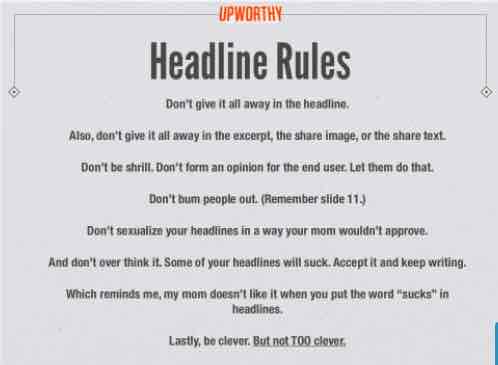
Image Source: Upworthy on Slideshare
#8 The Header Image
Facebook, Google, Twitter, … In many places, the header image is pulled into the preview of a blog post that is shared. This header image has great power.
Images in social media feeds catch more attention than posts without images. It is your chance to provide an image that will inspire people to click through to your content.
Test what responds with your audience – often an image with the headline of the post works well, but sometimes it could be another image like a surprising statistic, or a provocative quote from your article that gives you better results.
#9 The Structure of the blog post body
A blog post needs structure. You are not writing a book. A blog post is read online, often on mobile. Structure makes it easier to skim the content but also to quickly read it.
Add paragraphs, subheadlines, and bullet lists to your post.
#10 On-topic First Sentence
The first sentence is your chance of catching and keeping the attention of your blog visitor. The first sentence or paragraph needs to make it absolutely clear what your post is about. You should use the focus keyword.
If people don’t understand what the post is about in the first sentence, they are bound to leave again.
Google also understands the importance of the first sentence and uses it as an indicator for the context of the post.
#11 Grammar and Spelling
Everybody makes mistakes in their writing. That is human. But you don’t want to publish content that is full of grammar and spelling mistakes.
Reread your content, rather twice than not at all. Try to eliminate all spelling mistakes.
Even better, use a grammar and spelling tool to find everything that you missed. I am using Grammarly for my posts – even the free version will help you improve your writing.
#12 Images
I already mentioned the header image. But there is more to images than header image or even social media images.
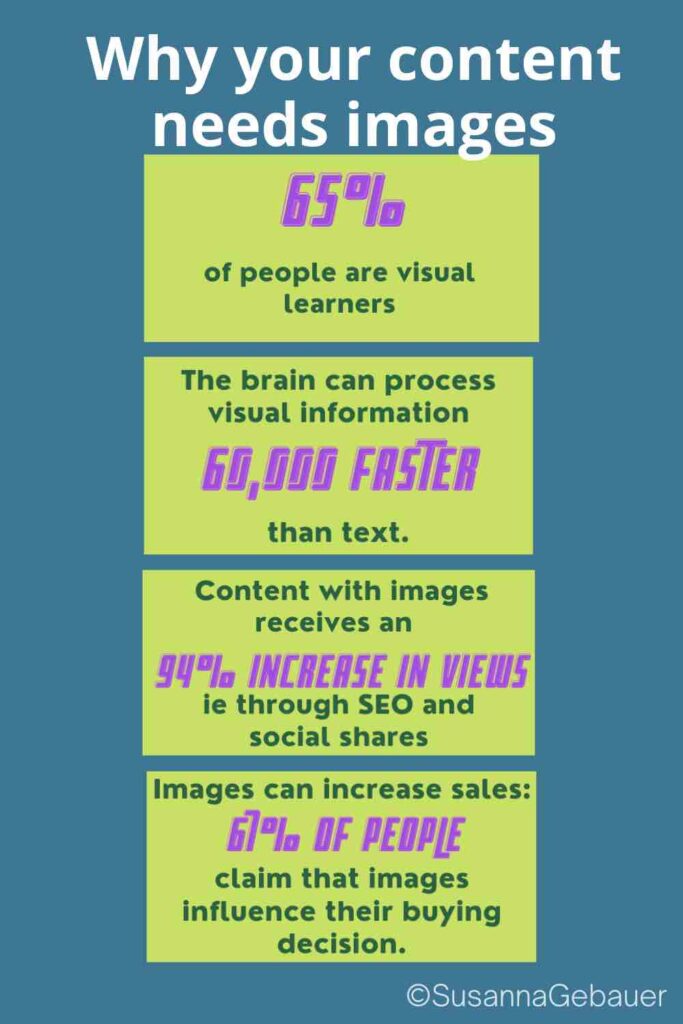
But let’s start with the images that you need for sharing your post: If you want your post shared on social media, you should provide the images that people need for that.
If you think your audience is on Pinterest, create a pin image.
If you want people to tweet your post, consider offering a Twitter image.
Other images that are great for social media shares are quote images, statistics on images or memes.
In addition, you need to know that images serve another purpose in a blog post: They make the text easier to read. Images provide visual information that can help structure your post. Also, people can process visual information faster, they will remember the images better than the text they read.
You can also add images to give your blog post a better chance to earn search traffic – Google has an image search and your images can rank in the image search results.
Images are beneficial for blog posts in more than one way – you find out more about how to use blog post images to make your post more successful in this post!
#13 Caption/Meta description
In the introduction of this article, I already mentioned the components of a blog post that people see before they even visit your blog. One of them is the caption and/or the meta description. This is a short summary or teaser text that Google shows in the search results or social networks show in the preview they display when you share a link.
If you ever thought about SEO you may be aware of how crucial this little piece of text is for traffic generation.
The meta description is strongly related to the click-through rate from search results. If your post ranks on page one of Google search results it can still provide you with zero traffic if the meta description is not set or shows a text that does not convince the audience that visiting your blog post is worth their effort.
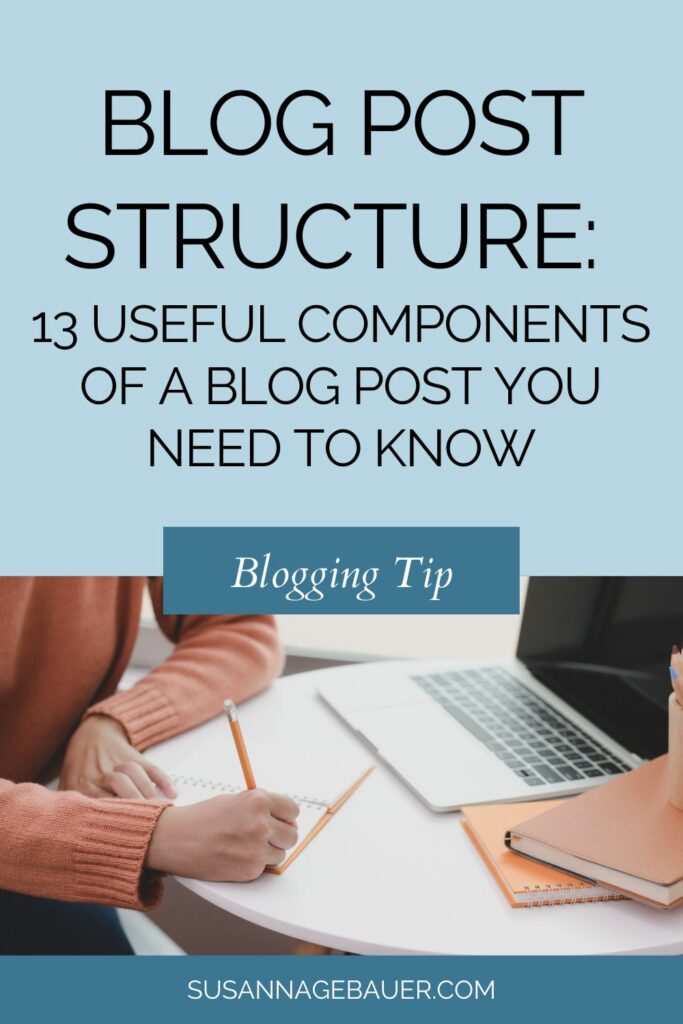
Don’t neglect this part of your blog post – even though it does not show anywhere on your blog!
Final words about essential blog post structure
People will remember your blog post (or not remember it). But the structure of your post and some crucial components will tremendously help you to reach a larger audience and achieve your goals for your content.
The structure of a blog post will help your audience consume it – they will love it more for it.
Don’t focus ONLY on the body copy and remember that people will only see it if they found the headline or the caption somewhere else. There are other parts of your blog post that you may have treated with a little less respect than they deserve.
Learn about great headlines, header images, and captions – and grow your audience!
Get the guide to content creation and fast-track your content marketing success:

